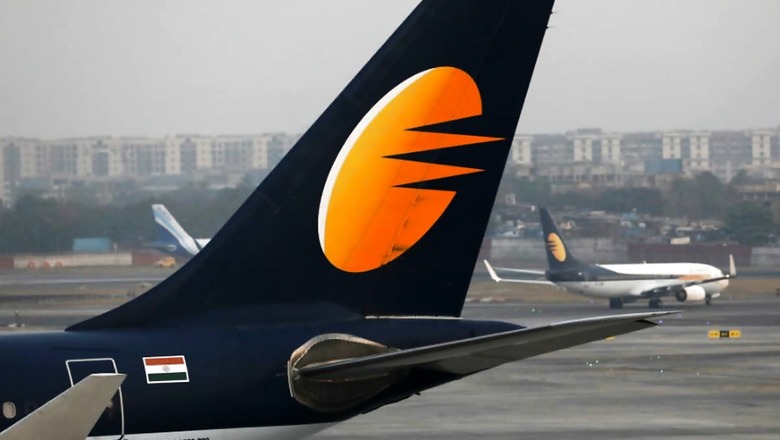As Indian Aviation Grapples with COVID Second Wave, Waiting it Out Can Actually Help Jet Airways 2.0

views
India’s oldest private airline—Jet Airways—continues its journey through the National Company Law Tribunal (NCLT). In spite of an investor lined up, the Rs 1000-crore bid is stalled over the issue of grant of slots—effectively, permissions for takeoff and landing at airports. On April 15, when a key decision on slots was expected, Jet found itself being handed yet another date in May.
The Jet Airways’ position is: it should be able to reclaim the slots that were “temporarily assigned” to other airlines during the period of its grounding. The government and other airlines contend this cannot be done because it is in violation of existing principles. Effectively, that implies that Jet has to get in line once more and reapply. The matter is to be decided in a bankruptcy court and the decision is now further delayed. Paradoxically, the delay may not spell total doom.
The Slot Fixation
The Jet revival hinges on this key decision because a good portfolio of slots translates into a good schedule. And, this is amplified in an intensively competitive market like India. The most coveted business passengers that choose flights based on schedule alone are what every airline is targeting. But as pricing between airlines has converged, passengers are having the last laugh with business and leisure travellers alike choosing flights based on price and schedule and getting the best of both.
Further, looking at the fragile financial position of most airlines, failing equity infusions or other drastic action, airline failures cannot be ruled out. So, Jet faces an environment where one less airline can be a reality which, in turn, means a very different market. A market Jet 2.0 can tap more effectively than making a rough landing in the current battleground where bloodied competitors are fighting it out for pieces of a shrinking pie.
The fixation on slots and the Jet Airways conundrum can be traced back to the last decade when the Indian aviation market went from strength to strength. Airport infrastructure was extremely constrained and the environment was intensely competitive. Slots were hard to come by. The grounding of Jet Airways in 2019 presented a scenario that competitors could only dream of. Both due to the size of the Jet fleet and also its network, it had more than 400 slots in the two busiest airports in the country. Thus, when the government declared that the grant of these slots, albeit temporarily, would be based on how many ex-Jet Airways aircraft airlines inducted, the latter rushed to add aircraft, without factoring in cost of complexity. The very policy of linking slots to aircraft induction has now come to bite the airlines.
A Delay Could Help Jet
The current impasse has the Jet Airways bidder, on the one hand, who insists the slots should naturally be covered under a moratorium. On the other side, rival airlines are likely to argue against this on the basis of globally established principles of slot allocation. Further, they are likely to leverage induction of aircraft and the subsequent cost impact to push their argument.
In all of this, what, however, remains unsaid is the market reality—the airline industry continues to bleed and the last thing competitors want is one additional player on the field. The government—both a player and a referee—is caught in between. And, everyone is so busy competing that other scenarios are simply not being considered.
Almost two years after filing for restructuring, Jet Airways continues to fight for flight. And, while a few weeks earlier it could be argued that with each passing day the hopes for its revival diminish, the second wave has turned the situation on its head. A decision, one way or another, is required but a delay no longer spells doom. If at all, it provides some more time to refine strategy, to revisit plans and to revalidate assumptions.
All this, while the investor continues to stay on the sidelines in an environment where there is an abundance of talent, where consumer behaviour is fast-changing and where the Indian traveller has demonstrated that a rebound is all but certain. With the second wave, the market has again seen a dip and the recovery will now be W-shaped. Jet 2.0 can position itself to ride this wave upwards. Whether or not it does remains to be seen.
Satyendra Pandey is the Managing Partner at the aviation services firm AT-TV. Views expressed are personal.
Read all the Latest News, Breaking News and Coronavirus News here. Follow us on Facebook, Twitter and Telegram.
















Comments
0 comment